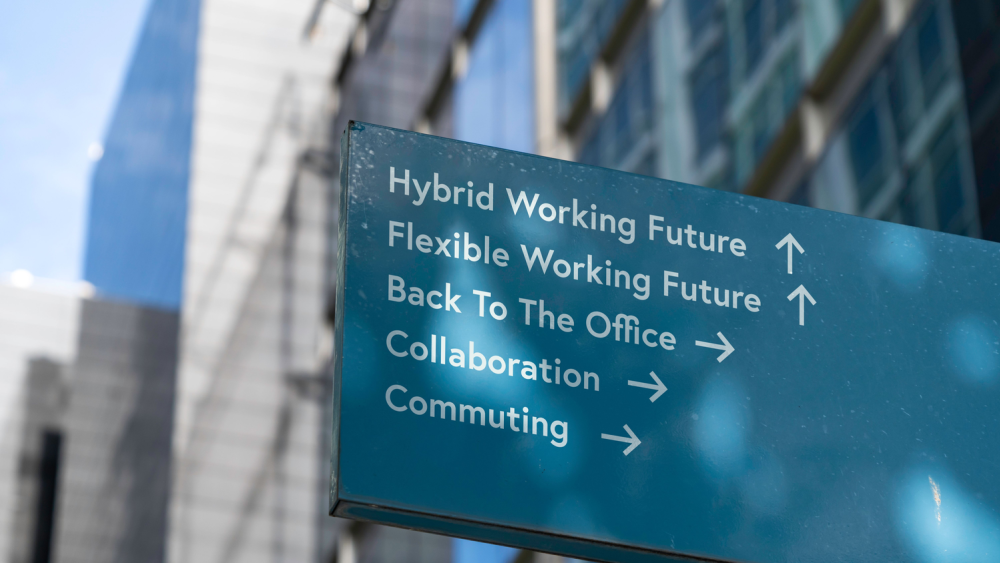
What Leaders Should Consider When Implementing AI
What Leaders Should Consider When Implementing AI
A New Step into the World of Technologies – Artificial Intelligence for Leaders
Prefer to listen to the article? Click below to access our AI speech-generated audio. However, if you want to read it as usual, keep scrolling.
Alexa, Chat-GPT, and Co – Artificial Intelligence (AI) is gaining more and more significance. Leaders are also increasingly relying on AI systems in their companies. In this blog post, you will learn about the areas where this technology is particularly suitable and what you, as a leader, should pay special attention to.
What is Artificial Intelligence?
Artificial Intelligence is the ability of a machine or computer to mimic human behavior and intelligence. In Austrian companies, these technologies are already being used to the extent of 38%. Let’s first take a look at the areas where Artificial Intelligence can be best applied.
Customer Service and Recruiting
A form of artificial intelligence that you are probably familiar with is chatbots that provide automated responses to customer questions. This saves your employees a lot of work, allowing them to focus on more complex tasks, thereby increasing the productivity of the company.
AI can also bring advantages in the field of recruiting. AI-powered programs can analyze applications based on keywords and qualifications and recommend the most suitable candidates for the position to employers.
Data Analysis for Success
Another useful capability of AI is to analyze key data and make decisions for the company. These technologies can identify trends and create a plan that is meaningful for the industry. Artificial Intelligence is much faster and more accurate than a human employee in this regard.
However, AI can not only determine existing trends but also predict future trends and adjust the company’s strategies accordingly. This naturally provides a competitive advantage.

Potential Risks of Artificial Intelligence
Although AI brings some advantages to our companies, there are also risks involved in its use. On the one hand, AI systems are more vulnerable to hacker attacks. Hackers can limit the capabilities of the programs, thereby infiltrating and gaining access to important information.
On the other hand, artificial intelligence is still only an imitation of human behavior and cannot replace emotions, creativity, and empathy. Chatbots can, therefore, appear impersonal, and their direct and unfiltered nature can be perceived as hurtful.
What Leaders Need to Consider When Implementing AI
As you can see, the use of Artificial Intelligence in companies is almost inevitable. Here are 5 tips on how to smoothly transition to these new technologies.
1. The Vision
First and foremost, you need to be clear about the exact purpose for which you want to use Artificial Intelligence in order to provide the best possible relief for yourself and your employees. Consider realistic goals that you can set for the company.
Share these goals and ideas in an AI roadmap with your employees. By doing so, you involve more people in the company in your decisions, and you can work out your plans together.
2. Soft Management Skills
In this age, leadership qualities such as curiosity and emotional stability become even more important as AI replaces the “hard” elements of leadership (such as processing information).
Leaders need to be more open to new things and adapt to changes. This can establish a basis of trust with your employees, making the implementation of artificial intelligence easier.
3. Test Artificial Intelligence
No one expects you to immediately master artificial intelligence in your company. You can simply try out the new technologies and test which applications of Artificial Intelligence you prefer.
Furthermore, the programs develop their own feedback loop, which allows you to simplify and improve their use.

4. Data Privacy and Transparency
Since AI systems often have access to personal data of employees, you should comply with European data protection regulations when using Artificial Intelligence.
In some cases, the applications may even need to be certified according to European standards to achieve the highest possible level of security.
Transparency is also crucial as your employees should know when and in what context artificial intelligence is used in the company. This promotes trust in the leadership and AI systems, and your employees can adapt to their use more quickly.
5. Don’t Forget About People
When implementing artificial intelligence, employees often have concerns about being completely replaced by machines. It is up to you not to forget about the human employees and continue to distribute tasks to them.
Artificial intelligence should be seen as more as a tool and less than a workforce. Data and proposed changes should still be analyzed and interpreted by humans.
As a leader, you should continuously support your employees and provide them with ongoing training to foster their work with artificial intelligence.
Conclusion
Artificial Intelligence brings several benefits to companies as it simplifies and automates work processes. At MDI, we have also familiarized ourselves with programs like Chat-GPT recently.
Of course, caution and careful consideration are necessary when applying AI. However, we are confident that with proper preparation and security measures, a significant step can be taken into a new world of technologies.
Sources:
- https://www.oed.com/viewdictionaryentry/Entry/271625
- https://www.hernstein.at/fileadmin/user_upload/HMR/HMR_2_2022_Digitale_Welt.pdf
- https://www.forbes.com/sites/forbesbusinesscouncil/2022/11/21/the-top-five-ways-ai-is-transforming-business/?sh=1a61f3e88e7f
- https://www.die-wirtschaft.at/weltmarktfuehrer/kuenstliche-intelligenz-als-fuehrungskraft-51404
- https://www.forbes.com/sites/metabrown/2018/07/30/predictive-analytics-terms-business-people-need-to-know-no-hype-allowed/?sh=6c3fc4d23d43
- https://www.forbes.com/sites/forbesbusinesscouncil/2023/03/01/understanding-the-benefits-and-risks-of-using-ai-in-business/?sh=7cf0b2d36bba
- https://www.forbes.com/sites/forbesbusinesscouncil/2022/11/21/the-top-five-ways-ai-is-transforming-business/?sh=1a61f3e88e7f
- https://hbr.org/2018/01/as-ai-makes-more-decisions-the-nature-of-leadership-will-change
- https://www.mckinsey.com/capabilities/people-and-organizational-performance/our-insights/will-artificial-intelligence-make-you-a-better-leader
- https://www.plattform-lernende-systeme.de/reden-und-beitraege-newsreader/ki-fuer-fuehrungskraefte-wie-der-einsatz-der-technologie-gelingt.html
- https://www.hbi.de/blog/wie-kuenstliche-intelligenz-ki-die-rolle-von-fuehrungskraeften-veraendern-wird/

Jana Wölfl
Marketing Assistant
Jana Wölfl works at MDI as a marketing assistant and writes blog posts for our site in addition to her studies at Leiden University.
She also works for SDI and supports us with writing content there as well.













